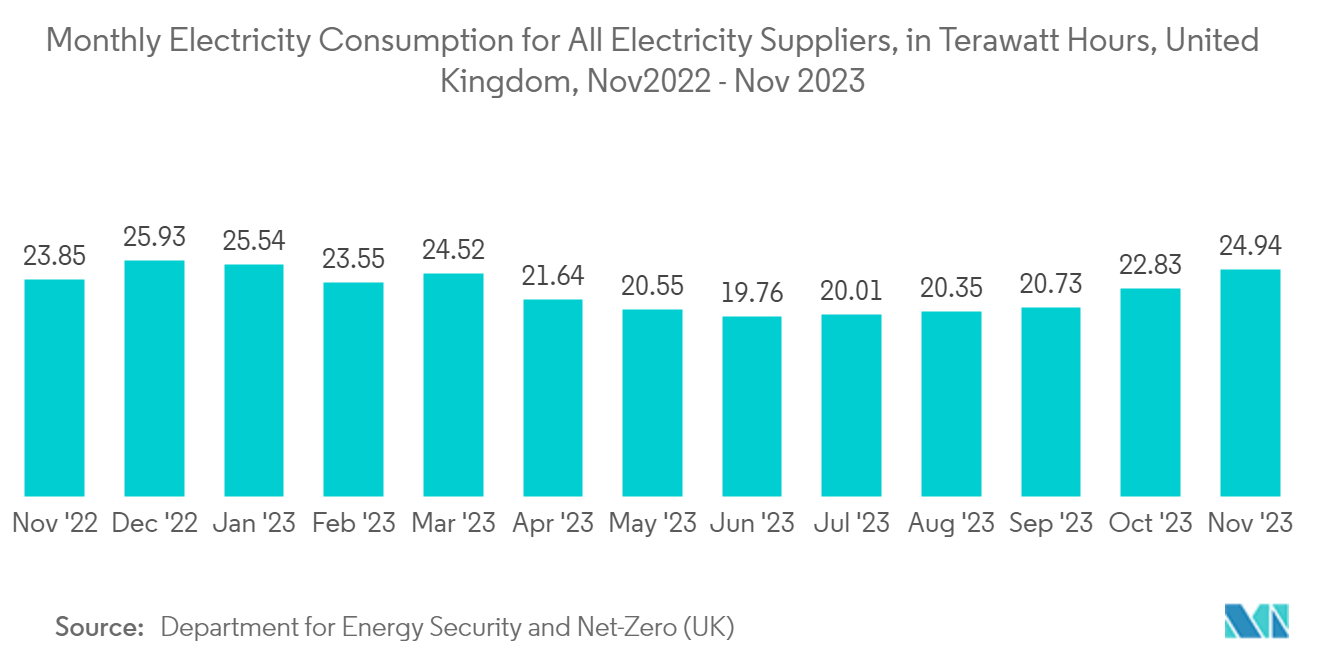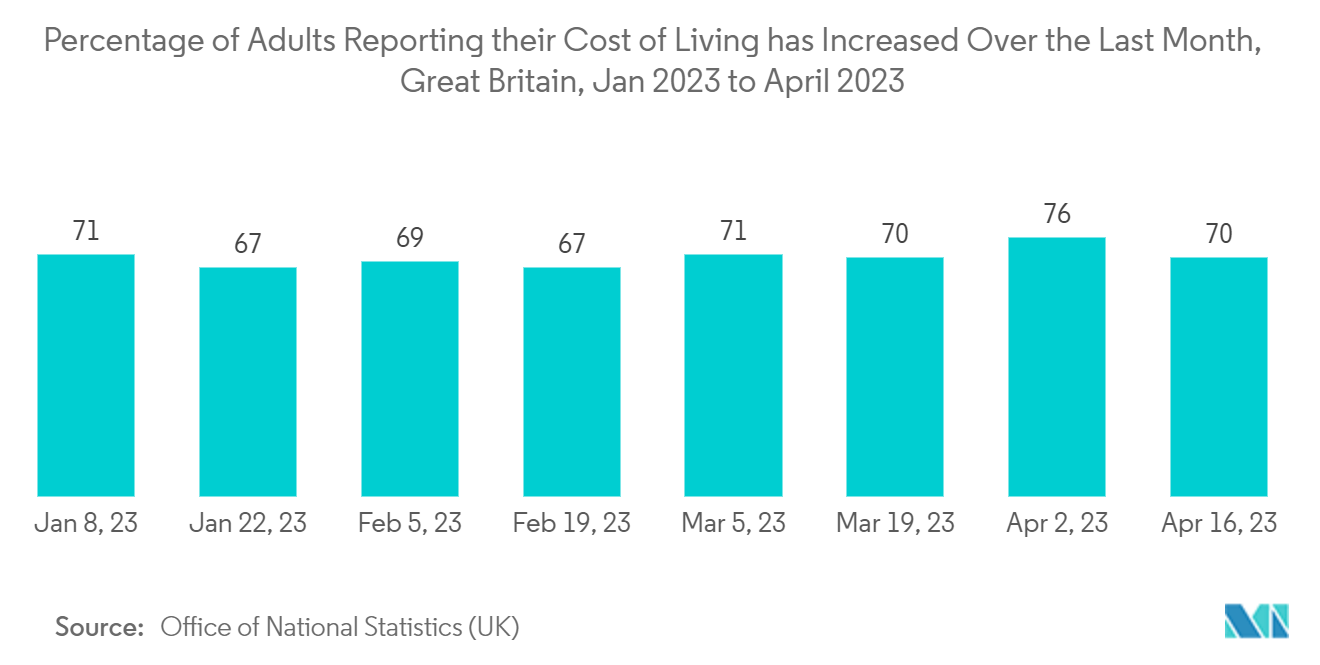Market Trends of United Kingdom Heat Pumps Industry
Air-Source Heat Pumps to Hold Significant Market Share
- The air source heat pump takes the electricity input, extracts the heat from the air, and gives hot water up to 90 degrees Celsius. Because of the extraction of heat from the ambient air, the ambient gets cooler. Resultantly, the need for hot water and cold air drives the growth of air-source heat pumps.
- There are two primary types of ASHP, air-to-water and air-to-air. An air-to-air heat pump absorbs heat from the outside air and transfers it into houses through a fan system to heat a room. The air-to-water heat pumps absorb heat from the outside air and transfer it via the central heating system to supply hot water heating, underfloor heating in an indoor space, or a radiator (or all three). Hence, choosing the type of ASHP determines the type of heat distribution system one necessitates.
- By 2035, all new boiler installations will be phased out in the country, and heat pumps will be in a prime position to fill the void. Around a quarter of a million UK homes are using heat pumps, and further, with initiatives like Boiler Upgrade Scheme, heat pumps are getting easier to afford by people in the country. For instance, homeowners in England or Wales can claim a GBP 5000 (~ USD 6,147.52)grant to help with the costs.
- The market is witnessing a lot of developments as researchers are trying to build a heat pump that is more efficient and cost-saving. For instance, in Dec 2022, Imperial College London scientists developed an air-source heat pump system to provide space heating and domestic hot water for single-family dwellings powered by solar. The system could facilitate cost savings of up to 39%.
- According to Energy and Industrial Strategy, electricity consumption in the United Kingdom has varied annually and seasonally, with demand consistently higher in the winter months, peaking each year in January. In November 2022, electricity consumption in the UK amounted to 24.3 terawatt hours.

Residential End-user Vertical to Hold Significant Market Share
- According to an extensive survey of more than 13,000 adults in Great Britain by the Office for National Statistics (ONS), titled 'Impact of the increased cost of living on adults across Great Britain: November 2021 to March 2022, with over 8 in 10 (83%) adults reported an increase in cost of living in March 2022 (3 to 13 March 2022) compared with 6 in 10 (62%) adults in November 2021 (3 to 14 November 2021).
- As utility bills and weekly shopping became expensive, the ONS conveyed that 34% of those reporting rising living costs said they were using less gas and electricity at home. In comparison, 31% said they were spending less on food.
- In a 2022 survey by the UK Department for Business Energy & Industrial Strategy found that 78% of the respondents use gas (central heating) to heat their property during the winter. While only 5% use electric (storage) heating and 5% employ oil (central heating).
- Currently, a significant percentage of UK households use gas boilers, making it one of the most carbon-intensive sectors of the economy. For instance, according to a study by the Institution of Gas Engineers and Managers (IGEM), the UK's home gas boilers emit twice as much CO2 as all power stations. The stat shows that home gas boilers collectively produce eight times as much nitrogen dioxide as the power plants in the nation.
- Given the situation, switching out fossil fuel heating with electric heat pumps and other low-carbon heating systems is key to the UK's plans to achieve net zero by the turn of the century.


